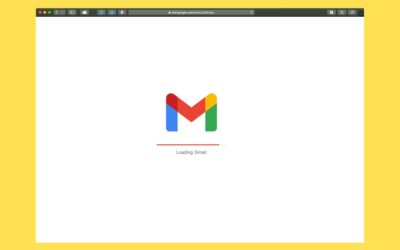Enterprise Resource Planning (ERP) systems are comprehensive software solutions that integrate and manage core business processes across various departments. These systems centralize data and automate tasks in areas such as finance, human resources, supply chain management, and customer relationship management. ERP systems provide a unified platform for all business operations, enabling more informed decision-making and increased operational efficiency.
A primary advantage of ERP systems is their ability to standardize and optimize business processes. By implementing an ERP solution, organizations can eliminate redundant tasks, minimize manual data entry, and enhance overall productivity. ERP systems also offer real-time visibility into business operations, allowing for more effective tracking of key performance indicators and improved reporting capabilities.
ERP systems facilitate improved collaboration and communication between departments by providing a centralized database. This allows employees to access necessary information more easily, leading to better coordination and faster decision-making. As a result, organizations become more agile and responsive to changing business needs and market conditions.
Key Takeaways
- ERP systems are integrated software solutions that help businesses manage and automate their core processes.
- Identifying your business needs is crucial in selecting the right ERP system that aligns with your goals and objectives.
- When evaluating different ERP systems, consider factors such as scalability, customization, and user-friendliness.
- Integration with SMS-iT can enhance the functionality of your ERP system and streamline communication within your organization.
- Budgeting and cost analysis are essential in determining the total cost of ownership and return on investment for an ERP system.
Identifying Your Business Needs
Involve Key Stakeholders
When identifying your business needs, it’s important to involve key stakeholders from different departments. This ensures that all perspectives are taken into account and that the chosen ERP system will meet the needs of the entire organization.
Consider Future Growth and Scalability
Additionally, it’s essential to consider future growth and scalability when evaluating ERP systems, as you’ll want a solution that can adapt to your evolving business needs.
Customization and Flexibility
Furthermore, it’s important to consider the level of customization and flexibility required for your business. Some ERP systems offer extensive customization options, while others are more rigid in their structure. Understanding your customization needs will help you narrow down your options and select a system that can be tailored to fit your unique business processes.
Evaluating Different ERP Systems
When evaluating different ERP systems, it’s important to consider a range of factors, including functionality, scalability, ease of use, and vendor reputation. It’s also crucial to assess the level of support and training provided by the vendor, as well as the system’s compatibility with your existing IT infrastructure. Functionality is a key consideration when evaluating ERP systems.
You’ll want to ensure that the system offers the features and capabilities necessary to support your business processes. This may include modules for financial management, inventory control, production planning, and customer relationship management, among others. Scalability is another important factor to consider when evaluating ERP systems.
As your business grows, you’ll want a system that can accommodate increased data volumes and user numbers without sacrificing performance. It’s important to choose a system that can grow with your business and adapt to changing needs over time. Ease of use is also a critical consideration when evaluating ERP systems.
A user-friendly interface and intuitive navigation are essential for ensuring widespread adoption and maximizing the system’s benefits. Additionally, it’s important to consider the level of training and support provided by the vendor to ensure that your employees can effectively use the system.
Considering Integration with SMS-iT
When selecting an ERP system, it’s important to consider its integration capabilities with other software solutions, such as SMS-iT (Sales Management System). Integration with SMS-iT can provide seamless communication between sales and other departments, allowing for better coordination and improved visibility into customer interactions. By integrating an ERP system with SMS-iT, businesses can streamline their sales processes and improve customer relationship management.
This integration allows for real-time data sharing between sales and other departments, enabling better decision-making and improved customer service. Additionally, it can help eliminate manual data entry and reduce errors by automating the transfer of information between systems. Furthermore, integration with SMS-iT can provide valuable insights into customer behavior and preferences, allowing businesses to tailor their sales and marketing strategies more effectively.
By leveraging the data from both systems, businesses can gain a comprehensive view of their customers and make more informed decisions about sales and marketing initiatives.
Budgeting and Cost Analysis
When implementing an ERP system, it’s important to conduct a thorough budgeting and cost analysis to ensure that the chosen solution aligns with your financial resources. This involves considering not only the upfront costs of purchasing the software but also ongoing expenses such as maintenance, support, and training. In addition to software costs, it’s important to consider the costs associated with hardware upgrades or additional infrastructure required to support the ERP system.
This may include servers, storage devices, networking equipment, and other IT resources necessary for optimal system performance. Furthermore, it’s important to factor in the costs associated with implementation and training when budgeting for an ERP system. Implementation costs may include data migration, customization, and configuration of the system to fit your specific business needs.
Training costs may include onboarding new users and providing ongoing education to ensure that employees can effectively use the system.
Implementation and Training

Establishing Clear Project Goals and Timelines
During the implementation phase, it’s important to establish clear project goals and timelines to ensure that the process stays on track. This may involve creating a project plan with defined milestones and deliverables, as well as assigning responsibilities to key team members involved in the implementation process.
Comprehensive Training for Employees
In addition to technical implementation tasks, it’s crucial to provide comprehensive training to employees who will be using the ERP system. This may involve conducting workshops, providing online resources, or offering one-on-one coaching to ensure that users are comfortable with the new system.
Maximizing User Adoption
Effective training is essential for maximizing user adoption and ensuring that employees can leverage the full capabilities of the ERP system. By providing thorough training and support, organizations can ensure a smooth transition to the new system and reap the benefits of their ERP investment.
Post-implementation Support and Maintenance
After the ERP system has been implemented, it’s important to provide ongoing support and maintenance to ensure its continued success within the organization. This may involve addressing technical issues, providing user support, and making necessary updates or enhancements to the system. Post-implementation support may include establishing a help desk or support team to address user questions or technical issues that arise after the system has been deployed.
This ensures that employees have access to the assistance they need to effectively use the ERP system and minimize disruptions to their daily workflows. Furthermore, ongoing maintenance is essential for keeping the ERP system running smoothly and addressing any performance or security concerns that may arise over time. This may involve applying software updates, monitoring system performance, and conducting regular health checks to ensure that the system is operating at optimal levels.
In conclusion, selecting and implementing an ERP system is a complex process that requires careful consideration of various factors such as business needs, functionality, integration capabilities, budgeting, implementation, training, and post-implementation support. By thoroughly evaluating different ERP systems and considering their alignment with your business objectives, you can ensure that you choose a solution that will streamline your processes and drive growth within your organization. Additionally, by providing comprehensive training and ongoing support, you can maximize user adoption and ensure the long-term success of your ERP system implementation.
If you’re interested in learning more about maximizing customer relationships with SMS-iT, you should check out this comprehensive guide to effective CRM on the SMS-iT blog. This article provides valuable insights into how to make the most of your CRM system and build strong relationships with your customers.
FAQs
What is an ERP system?
An ERP (Enterprise Resource Planning) system is a software solution that integrates and manages a company’s core business processes, often including finance, HR, manufacturing, supply chain, and customer relationship management.
Why is choosing the right ERP system important?
Choosing the right ERP system is important because it can significantly impact a company’s efficiency, productivity, and overall business performance. A well-suited ERP system can streamline processes, improve data accuracy, and provide valuable insights for decision-making.
What factors should be considered when choosing an ERP system?
When choosing an ERP system, factors such as the company’s specific business needs, scalability, ease of use, integration capabilities, vendor support, and total cost of ownership should be carefully considered.
How can SMS-iT help in choosing the right ERP system?
SMS-iT is a comprehensive guide that can assist in choosing the right ERP system by providing valuable insights, best practices, and considerations for evaluating and selecting an ERP solution that aligns with a company’s unique requirements and goals.
What are the benefits of using an ERP system with SMS-iT?
Using an ERP system with SMS-iT can offer benefits such as improved data management, streamlined processes, enhanced decision-making through real-time insights, better collaboration across departments, and increased overall operational efficiency.







